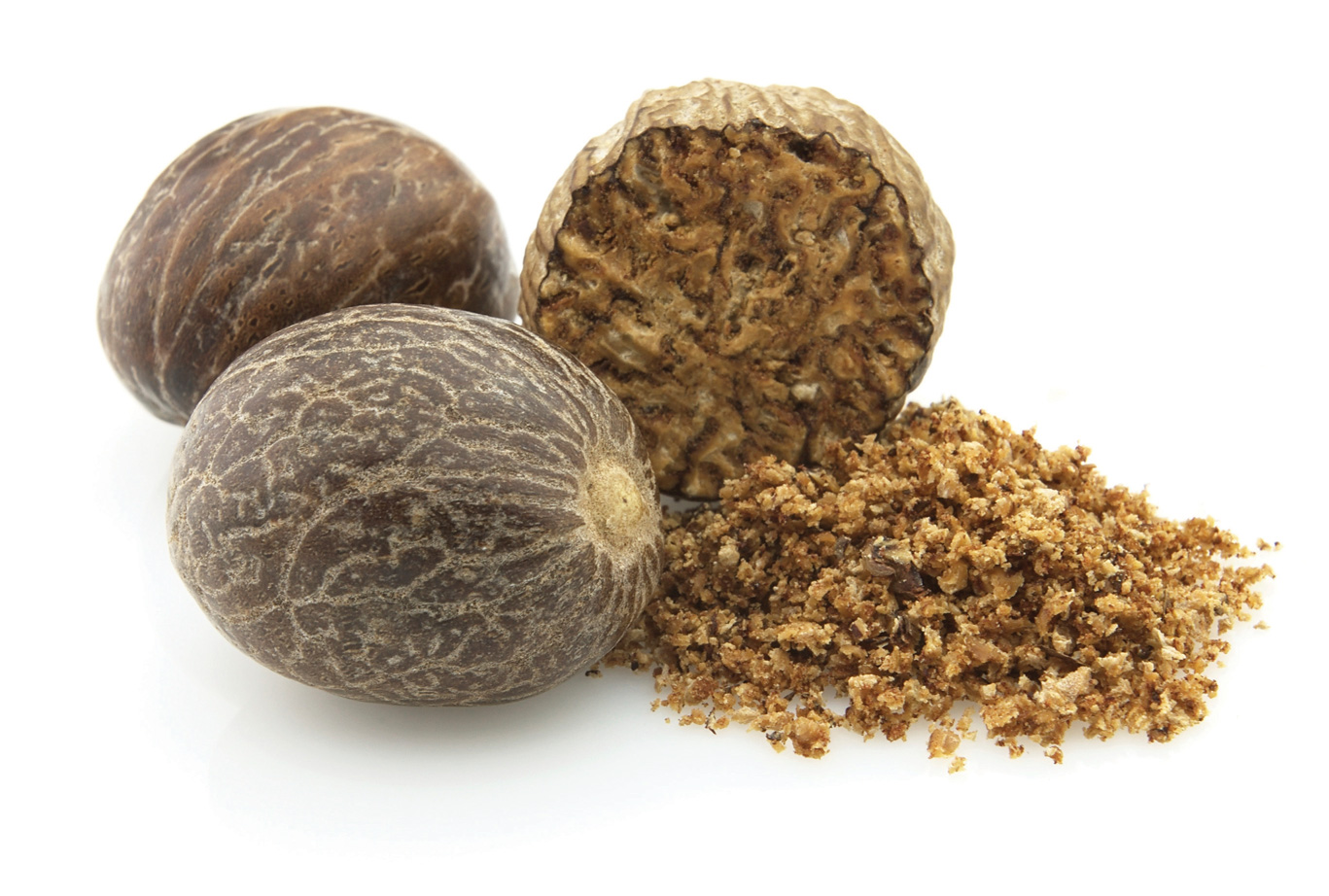This is “Nutrients Important As Antioxidants”, chapter 8 from the book An Introduction to Nutrition (v. 1.0). For details on it (including licensing), click here.
For more information on the source of this book, or why it is available for free, please see the project's home page. You can browse or download additional books there. To download a .zip file containing this book to use offline, simply click here.
Chapter 8 Nutrients Important As Antioxidants
Big Idea
Eating foods such as fruits, vegetables, herbs, and spices that are high in antioxidants can help prevent cell damage and promote health.

Nutmeg, which is obtained from the seed of the evergreen tree, Myristica fragrans, was once a highly coveted spice.
© Thinkstock
Government trickery and greed are a big part of the history of the woody, bittersweet nutmeg people sprinkle in their eggnog and add to their pumpkin pie.
Arabs originally controlled the lucrative nutmeg trade. Run Island, part of the Banda archipelago in the Maluku province of Indonesia, and (for a while) the sole source of nutmeg, remained a well-kept secret under their control. Then, in 1521, the Portuguese conquered the southern region of Malay in Indonesia and discovered the island.
Control of this nutmeg source switched hands rapidly from this point on. Although the Portuguese claimed ownership for a moment, the Spaniards were quick to take over. In the seventeenth century, the Dutch East India Company invaded the Band Islands. They then ran plantation estates on Run Island and actively patrolled the sea in war vessels to discourage the stealing of seeds from Myristica fragrans. They went so far as to track the movement of pigeons and other animals that might unwittingly transport the seeds elsewhere, and they burned any trees found off of Run Island.
The battles over Run Island had one important motivation: money. Trade was lucrative in the seventeenth century because nutmeg was valued as a curative for stomach ailments, as an aphrodisiac, and as a healer of the liver. The spice even had a reputation for curing the plague, which might have worked—wearing a clove of it around the neck may have deterred fleas and other disease carriers. Buyers were also well aware of nutmeg’s hallucinogenic properties and used it in high doses as a psychoactive drug. Its price was astronomically high and kept so by the Dutch, who burned their own nutmeg warehouses down to assure the laws of supply and demand did not lower the spice’s value.
During the Napoleanic wars, while the Dutch were battling the French, the British slipped onto Run Island, stole Myristica fragras seeds, and successfully grew the tree on plantations on the island of Grenada. Today, Grenada, also known as the “Isle of Spice,” produces about one-third of the world’s supply, which is why its flag boasts a clove of nutmeg.
Our ancestors were probably right to value nutmeg for its curative properties. While it does not actually cure disease outright, nutmeg contains a variety of antioxidants, including phenolic compounds, lignans, and eugenol. Foods rich in antioxidants have been touted as preventative and curative, and some believe they delay certain aspects of the aging process. While we are no longer fighting over nutmeg’s production and sale, we are waging a fierce debate about the lack of scientific proof of these believed benefits.
The “antioxidant hypothesis”—the educated guess that antioxidant chemicals protect against chronic disease—has existed for decades. Despite thousands of studies conducted on the health benefits of particular antioxidants, there is little evidence supporting the idea that they singularly prevent disease, reduce the effects of aging, or promote health. It is the combination of antioxidants, phytochemicals, and nutrient-rich foods that achieves these end goals.
Nutmeg has been shown in animal and laboratory studies to act as an antimicrobial, antifungal, and anti-inflammatory agent. It has protected against liver damage and stimulated male sexual activity in rats. However, none of these effects has been scientifically shown to occur in humans. On the other hand, nutmeg has proven effective as a psychoactive drug when taken in high doses.
In this chapter, you will learn there is no miracle food or supplement. The debate over the nutmeg’s effectiveness as an antioxidant—and over the effects of antioxidants in general—is proof of this. You will also learn that plant chemicals can affect the body in many different ways, depending on the type of chemical and the dosage. Different antioxidants are believed to have different functions, and those functions are sometimes interdependent or dependent on the amount of nutrient-rich foods you eat.
You Decide
Will you increase your intake of antioxidant- and nutrient-rich foods to improve health and reduce the risk of chronic disease? Why and how?
“Shall I not have intelligence with the earth? Am I not partly leaves and vegetable mould myself?”
Henry David Thoreau (July 12, 1817–May 6, 1862)




